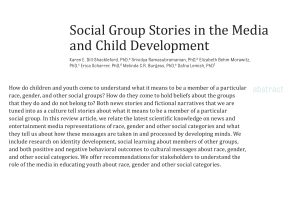Abstract
How do children and youth come to understand what it means to be a member of a particular race, gender, and other social groups? How do they come to hold beliefs about the groups that they do and do not belong to? Both news stories and fictional narratives that we are tuned into as a culture tell stories about what it means to be a member of a particular social group. In this review article, we relate the latest scientific knowledge on news and entertainment media representations of race, gender and other social categories and what they tell us about how these messages are taken in and processed by developing minds. We include research on identity development, social learning about members of other groups, and both positive and negative behavioral outcomes to cultural messages about race, gender, and other social categories. We offer recommendations for stakeholders to understand the role of the media in educating youth about race, gender and other social categories.
This article was published in a special 2017 supplement of Pediatrics, a journal of the American Academy of Pediatrics. The supplement, “Children, Adolescents and Screens: What We Know and What We Need To Learn,” was produced by Children and Screens and includes the contributions of more than 130 interdisciplinary authors across 22 papers. See a complete list of articles included in the supplement.
